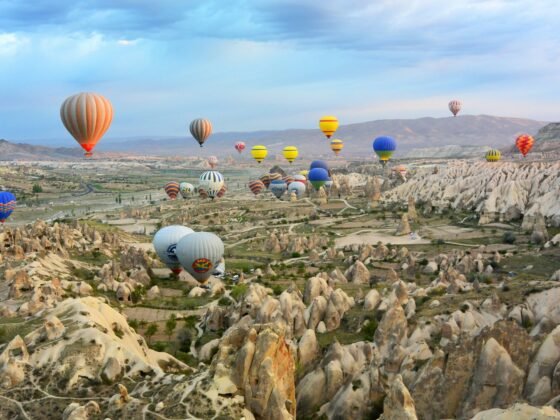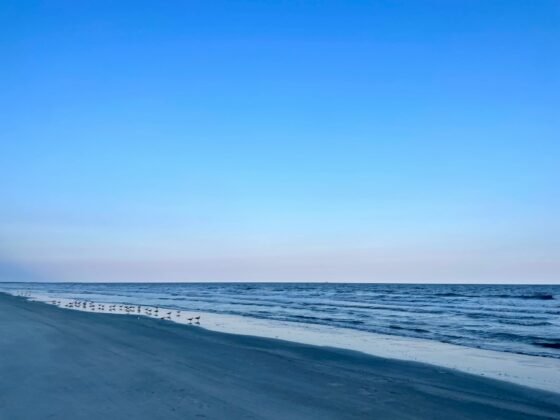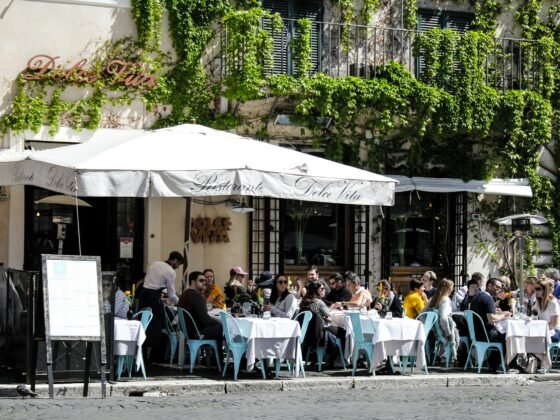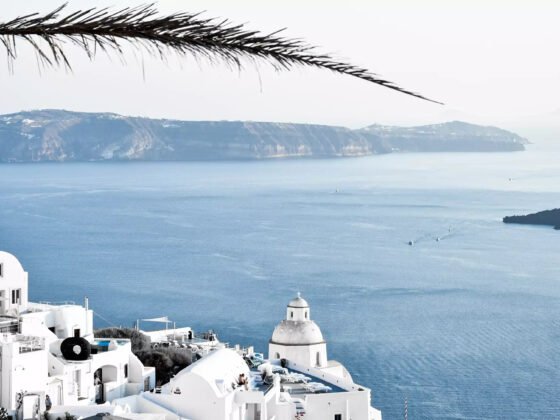Angola Holidays – Tours & Adventures Travel Guide
PureTravel Says
“The African country of Angola offers travelers a stunning coastline with beautiful sandy beaches, a mountainous interior, deep gorges and tumbling waterfalls, and a number of National Parks and wildlife reserves. Offering great scope for eco-tourism, Angola has reemerged to become a popular destination for adventure seekers after years of struggle. What is lacks in infrastructure it more than makes up for with its diverse range of terrains, stunning landscapes, magnificent waterfalls, Portuguese architecture, rich traditional culture, it’s vibrant capital, coffee plantations and a people who are gracious and hospitable. Angola is able to offer a scenic and exciting trip that will be remembered for years to come.”
-----------------------------------------------------------
Angola Holiday Highlights
History & Culture - Angola was ruled for 400 years by Portugal until 1975, and both countries share many cultural aspects, including language and main religious roots. Although once known as a nation in constant upheaval, Angola has overcome many obstacles to offer visitors a warming and welcoming culture that travelers will love. The people are a strong and resilient group that have worked hard to preserve Angola’s natural beauty. Many buildings in Angola reflect the cultural contributions of the Portuguese.
Some of the oldest landmarks are churches in the far north where missionaries to the Kongo kingdom were based. Traditional Portuguese style buildings can be found all over Angola and are homes to many museums, mosques and other important buildings, that offer additional insight into the civilizations that have made Angola what it is today.
Nature & Wildlife - Angola’s diverse terrain and range of climates make it the perfect place to explore nature. Many different types of wildlife can be found in the country, allowing visitors to see a mixture of wild game, birds and marine life. A diversity of wildlife in Angola can be found in the rainforest, on the coasts and out on the savannah and there are 11 National Parks.
The black palanca antelope is a species that is unique to Angola. Even the dense Angolan forests boast some amazing plants and animals that make the exploration well worth the time.
Water Sports - Angola’s warm climate and beautiful coastline make it a great place for swimming and fishing. The capital Luanda and the nearby Mussolo Island are great places for all manner of water sports and are popular with surfers and windsurfers. Mussolo has white beaches lined with coconut trees and is a good swimming spot.
About 44km south of Luanda is the Palmeirinhas beach, which is famous for its fishing grounds, but is also known for its dangerous undercurrents. Most beaches are very clean and pristine with an abundance of marine life.
Walking & Trekking - An excellent destination for hikers and walkers is the Tunda Vala Volcanic Fissure near Lubango which offers breathtaking views from the edge of the escarpment over rolling hills well above the clouds to the Atlantic Ocean that is only 18 miles from the mountain.
Scenery & Landscapes - The landscape includes broad tablelands varying from 3,000 to 5,000ft in altitude; while a high plateau in the south ranges from 4,000 to 7,000 ft. The highest point in Angola is Mount Moco (8,569ft) in the Bengula region and Mount Navil (8,133ft) in the Cuanza Sul. Much of the landscape is dramatic, with bizarre rock formations, plunging waterfalls and deep gorges.
-----------------------------------------------------------
When To Go
Angola has a very diverse countryside that is made up of a dry coastal area and savannah, a wet highland, as well as a rain forest; giving it a range of climates. This means when to go is dependent on where you are going. The country has the most pleasant overall weather from May to October, when rain is at a minimum. The coastal areas enjoy a nice breeze during this time, which is very pleasant. The interior highlands also enjoy the best weather during these months, although the overnight temperature can fall to freezing. Some tourist attractions, such as the Kissama National Park, are closed during the rainy season.
-----------------------------------------------------------
Top Tips
- When traveling in the interior highlands, be sure to pack warm clothes for nighttime when temperatures often drop to freezing.
- It is not recommended to photograph public places, public buildings or public events.
- Respect the local customs.
- Many parks are closed during the rainy season, so keep that in mind when making travel arrangements.
- Generally, all restaurants accept USD in cash and none accept credit cards.
- The Angolan currency (the Kwanza) may not be taken out of the country.
- Check into a bungalow in Kissama National Park and explore rare Angolan antelope.
- Rent a boat and go fishing off Santiago beach while in Luanda.
- Visit the Skeleton Coast of Namibia by way of the Iona National Park.
- Hike to the Tunda Vala Volcanic Fissure near Lubango.
- Visit the Kalendula Waterfall and take lots of photos
- Visit the Benfica Market in Luanda for handicrafts and souvenirs.
- Learn about coffee at a coffee ranch.
-----------------------------------------------------------
Angola Holidays In Focus
History & Culture - Angola was a Portuguese colony from the late fifteenth century. Before then the territory was ruled by an African monarch who reigned over a region known as the Kingdom of Kongo. Portugal reigned until independence was granted in 1975. With influence from European nations and small tribes, Angola offers one of the most diverse and fascinating cultures in Africa.
The capital city of Luanda was founded in 1576 and is the largest city in the country. Luanda boasts some of the best examples of European architecture as well as houses the most museums. Places to visit include the fortress, which contains the Museum of Armed Forces and the National Museum of Anthropology, which contains a fine collection of African arts and handicrafts. The Cathedral of Luanda, completed in 1628, is another impressive building. The Humbi-Humbi art gallery is a place to view cultural delights, while 16 miles along the coast from Luanda is the Museum of Slavery, which will provide historical insights.
Outside of Luanda, there are many other cities where the more reserved Angolan culture can be explored. Many of the coastal cities show a more relaxed side of the Angola people. Lubango is one of these cities that are very popular for its scenic landscape and simpler way of life. It provides access to the coastal town of Namibe with its excellent beaches.
Benguela is Angola's second most important city and the country's self-proclaimed cultural capital. On the coast, it retains a laid-back atmosphere although it is a large city. You can take a 90 minute train trip on the Benguela Railway from the central station to Lobito. The worn cattle truck style transport is like something from an Indiana Jones movie.
There are many coastal forts including Fort Sao Miguel, which was built in 1789 as a slave depot. The oldest church in Angola is São Salvador do Congo Church built in 1488 in northwestern Angola.
The Ambriz and Nambuangongo areas, about 100 kilometers north of the capital is where you go to see coffee ranches covered with white flowers during the January rainy period and then the red coffee berries in June when the weather is cooler.
Nature & Wildlife - Angola has a vast diversity of plant and animal species. Cabinda province has dense, humid forest, rich in exotic trees that provide habitat for gorillas. Savannah forestland is found south of Zaire, in the basins of Kwanza, Kuango, Cuito and the tributaries of the Cassai. On the elevated plains, the open forestland provides a natural habitat for many African species, whiles further south is the desert area of Namibe. A vegetable species called Welwitshia Mirabilis grows here and nowhere else in the world.
Eleven National Parks plus other special reserves have been created throughout the whole of Angola, although most are little visited. The most accessible is Kissama 43 miles (70km) south of Luanda, which is mainly coastal savannah, dotted with baobab trees. Species include elephants, water buffalo, the unique black palanca antelope, and numerous bird species. The coastline of the park is used an egg laying ground for the sea turtles while manatees can be spotted off the coast. You can stay at thatched chalets in the Park overlooking the Cuanza River.
Other National Parks include the Lona National Park, Bicuar National Park, Mupa National Park, Cameia National Park, Cangandala National Park and the Luando Special Reserve. One of the best ways to explore wildlife is to take a tour of some of the forests and deserts found in Angola. There are plenty of guides that are very knowledgeable about the different species found in each area. The Namibe desert is an especially good area to find wildlife, which includes many popular African species such as antelope and panthers.
Water Sports - Angola has a long Atlantic coastline with many excellent beaches. Although the climate allows you to enjoy the beach all year round they are busiest during the hot season. In Luanda, the most popular are the beaches of Ilha do Cabo, Mussulo, Palmeirinhas, Corimba and Santiago. In Benguela there is Morena, Restinga, Caóta, Caotina, Baia Azul and Baia Farta and in Namibe there is Das Miragens and Azul. The Namibe area boasts some of the clearest and calmest waters in the country, making it perfect for diving and snorkeling.
For visitors looking for a bit more adventure, the Mussolo Peninsula is known for offering a variety of water sports, including sailing and diving. This is also a popular area for Olympic training in the country, offering a chance for seeing water sports at their finest. This area is also a well-known fishing destination, with many different fish being found here. It is popular among surfers for its exposed break point and reasonably consistent surf and uncrowded beaches, and windsurfing is also popular due to the strong winds from the northeast. On the eastern side the beaches are protected from the Atlantic with clear blue water and you might even spot a few flamingos.
Another popular beach area is Lubango, which boasts well-preserved beaches that are popular for swimming and lounging. Santiago beach just north of Luanda offers great fishing. South of Luanda is Cabo Ledo, which is a famous surfing beach. Another option for a low-key water adventure that is very popular is the Calandula Waterfalls that are found in the Malanje region. These waterfalls are very popular for swimming, relaxing and just enjoying the scenery.
Scenery & Landscapes - Most of the landscape is dramatic and ranges from rainforests, mountains, plains to beautiful beaches There are strong forceful rivers that plunge down rock faces in fantastic waterfalls, and there are the sands of the Namibe desert. Hot springs can be found at Huambo and Kwanza Sul.
Magnificent waterfalls to visit include Sumbe and the Cachoeiras Falls in the traditional coffee growing area of Kwanza Sul. For the more adventurous there are the spectacular Kalendula Falls and Pedras Negras on the way to Malange in the east. The Kalendula waterfall is the second biggest waterfall in Africa and is best shortly after the rainy season. Nearby are the Pedras Negras rocks formation.
-----------------------------------------------------------
Classic Itineraries










